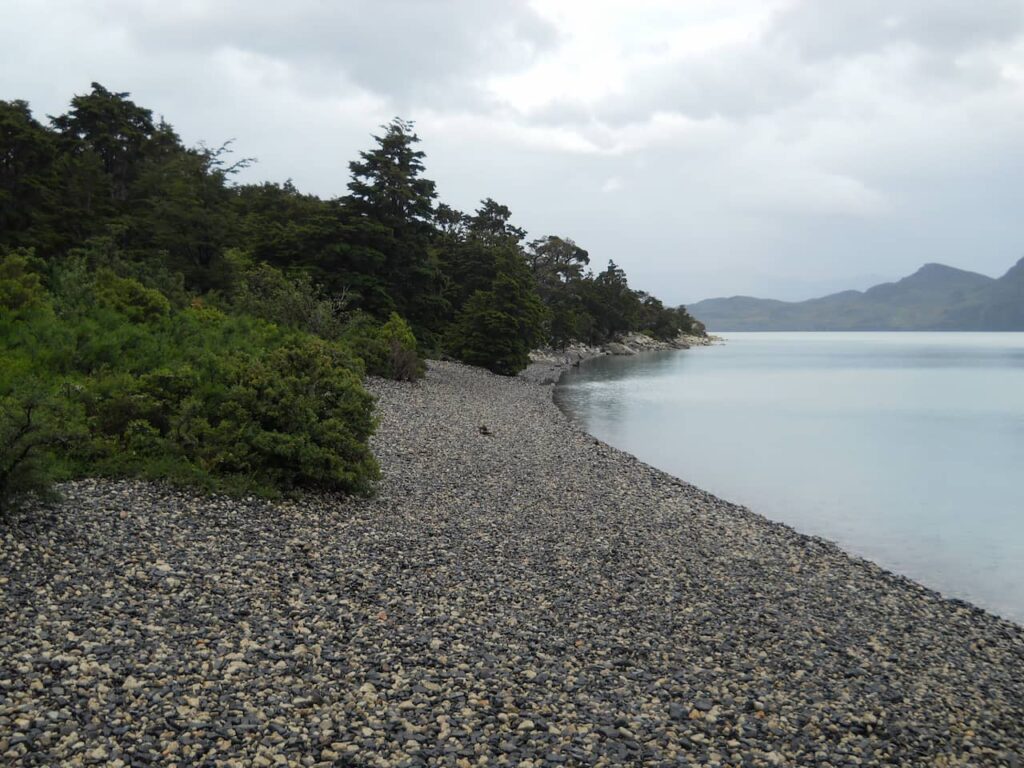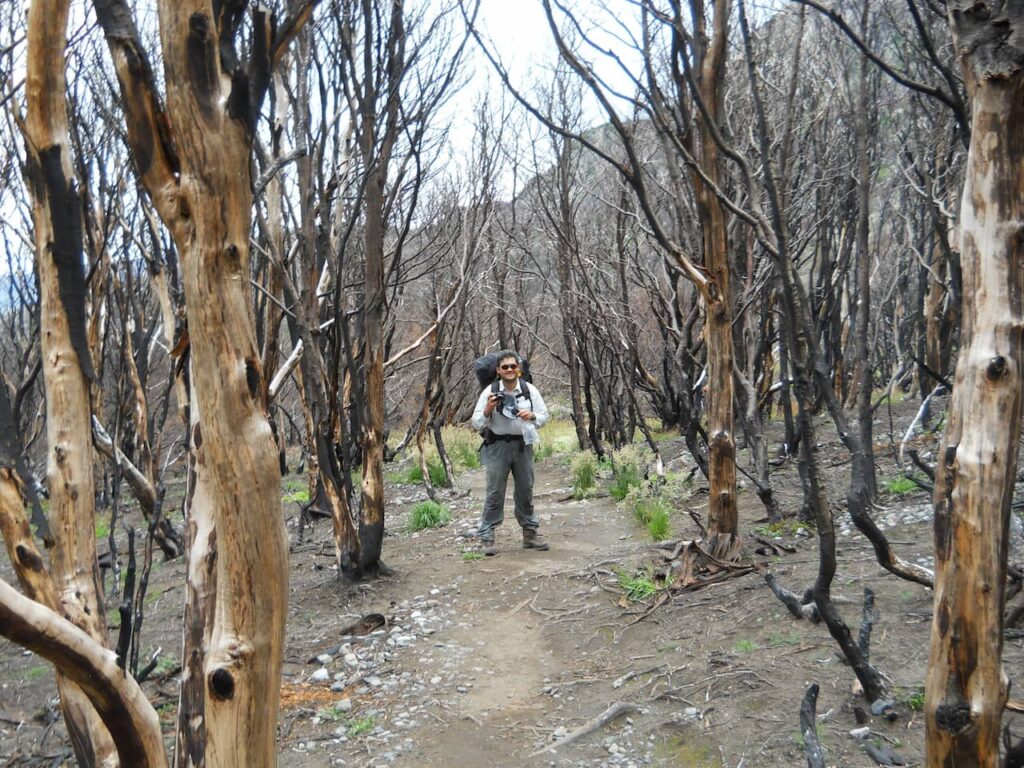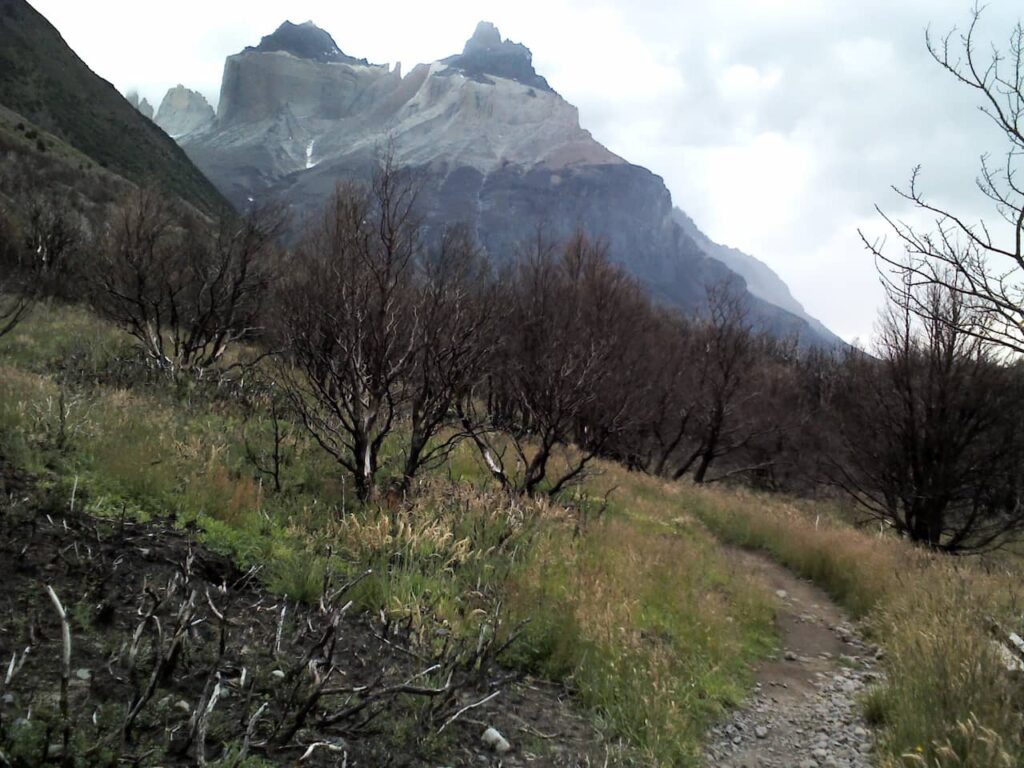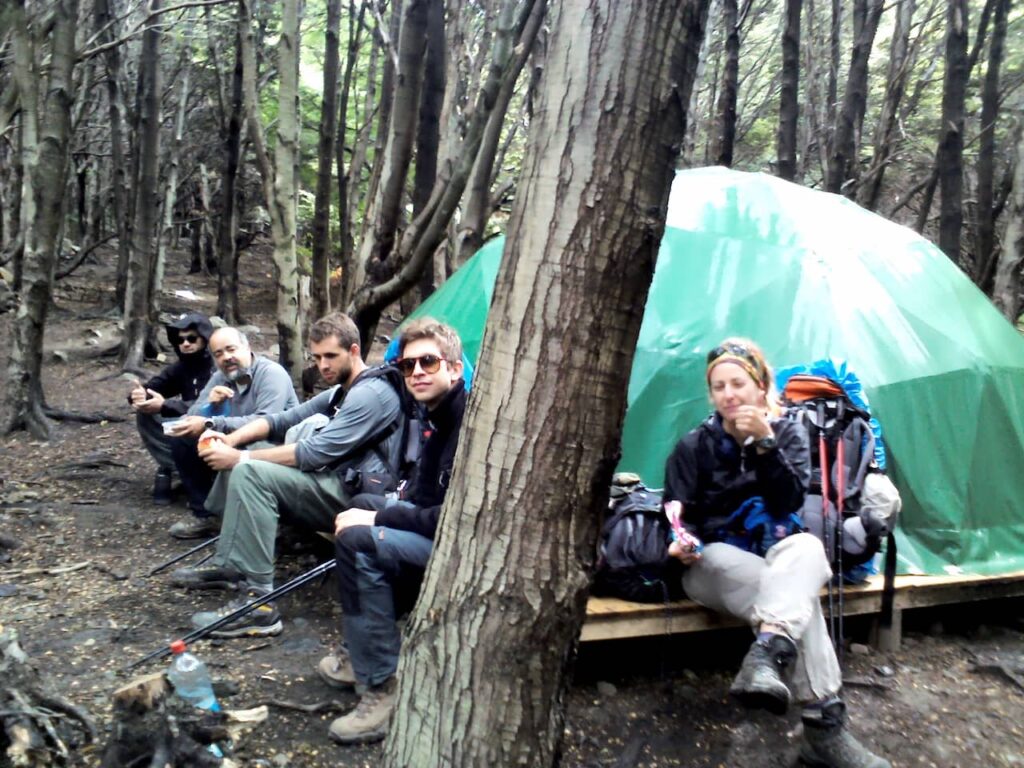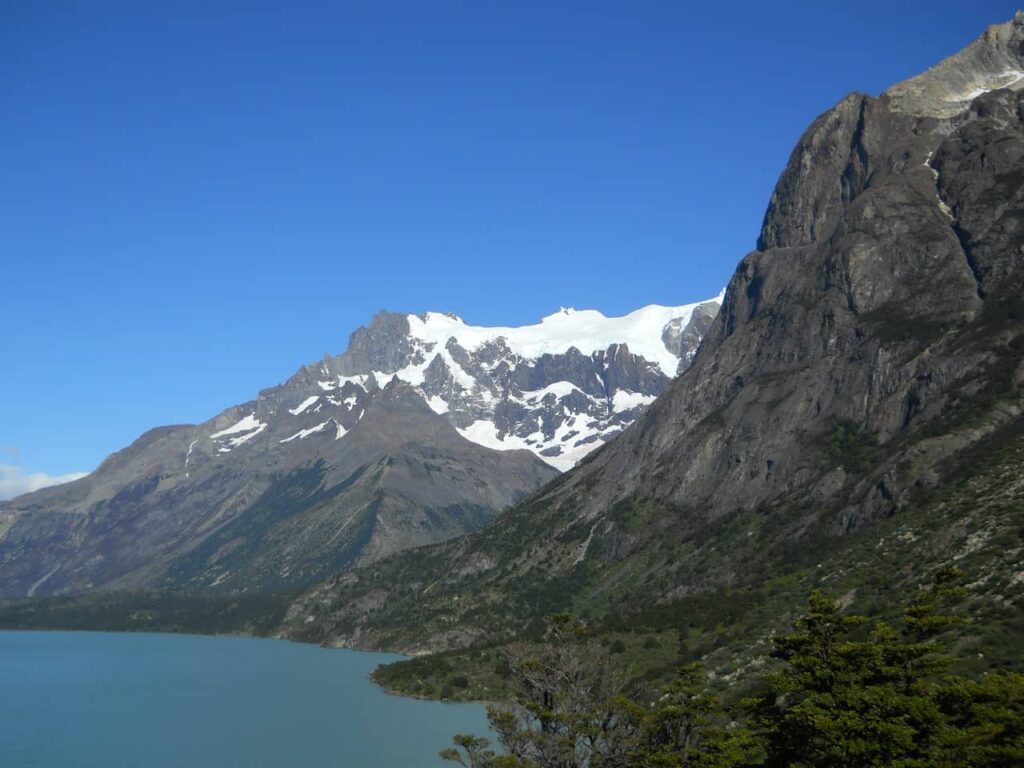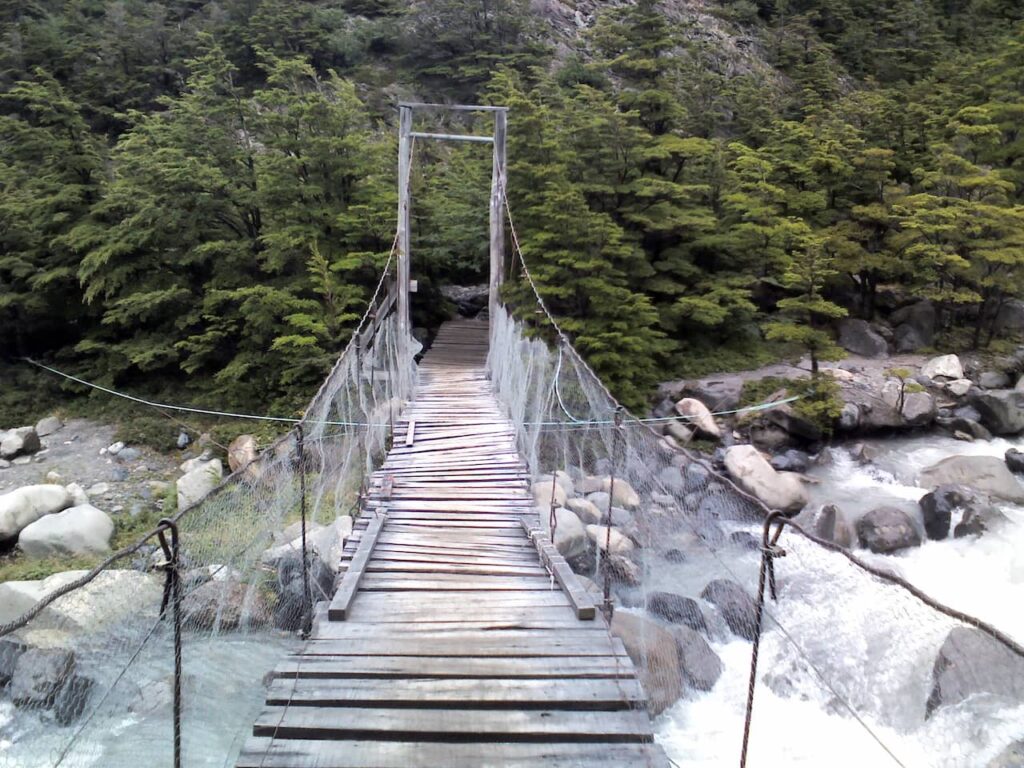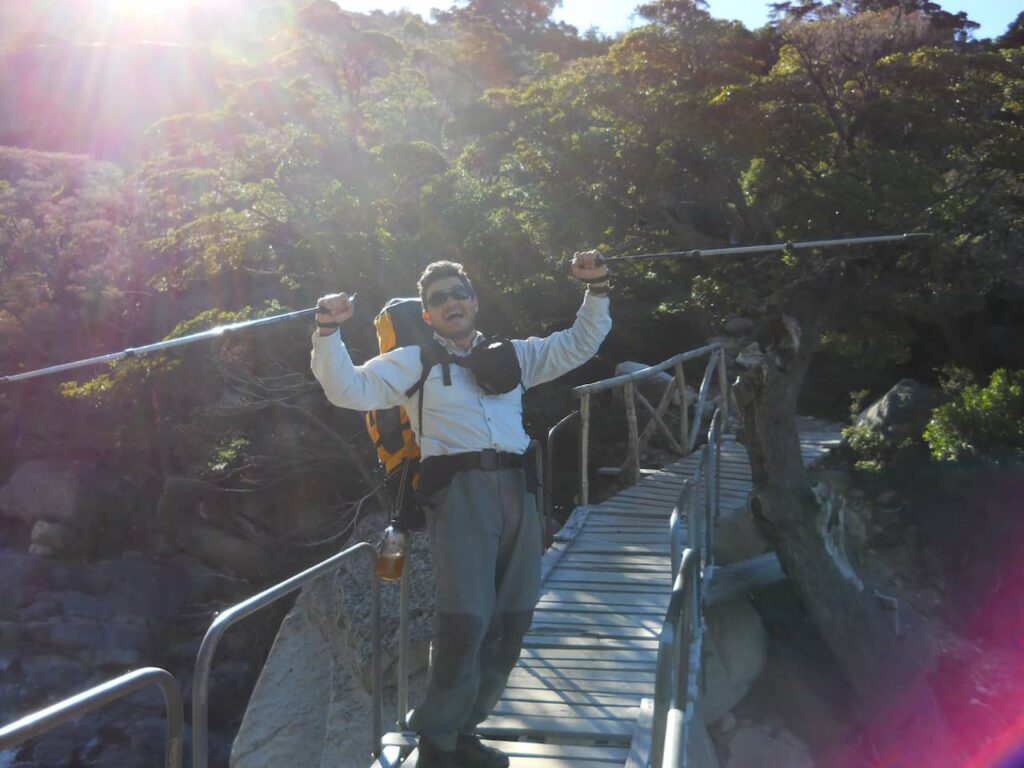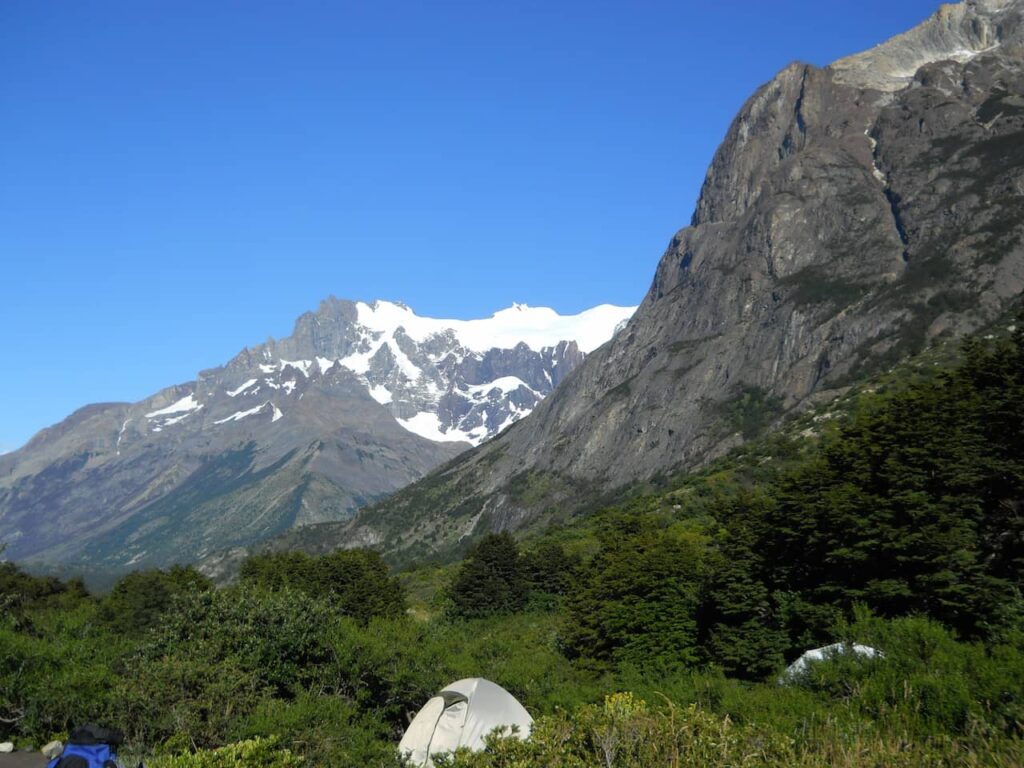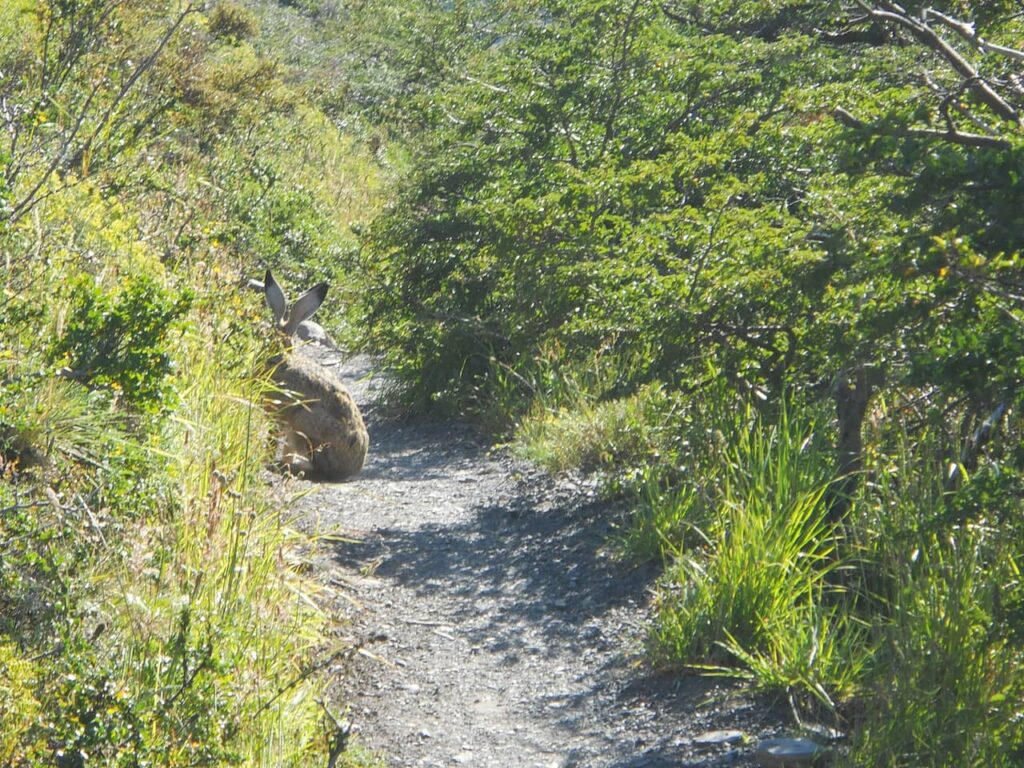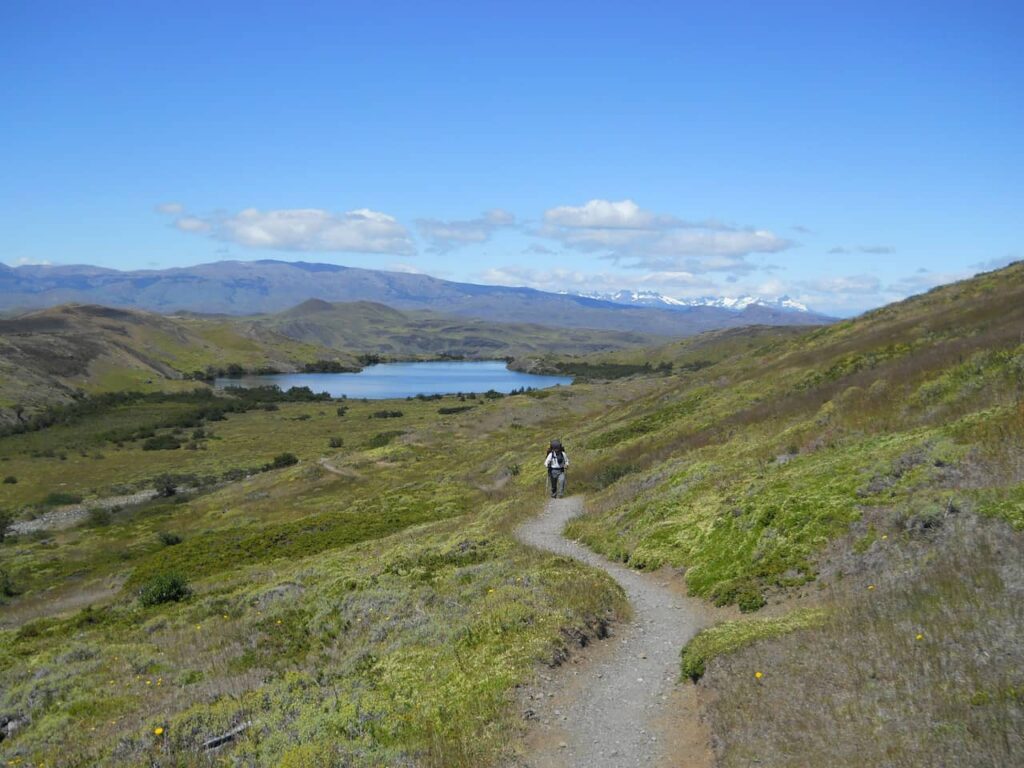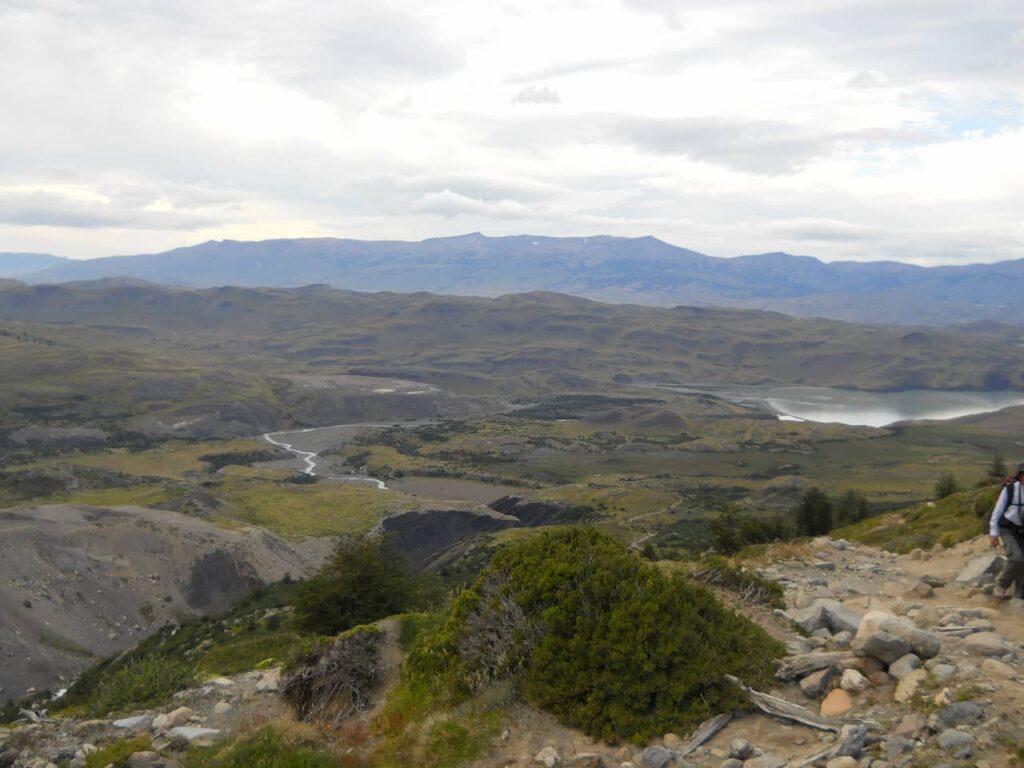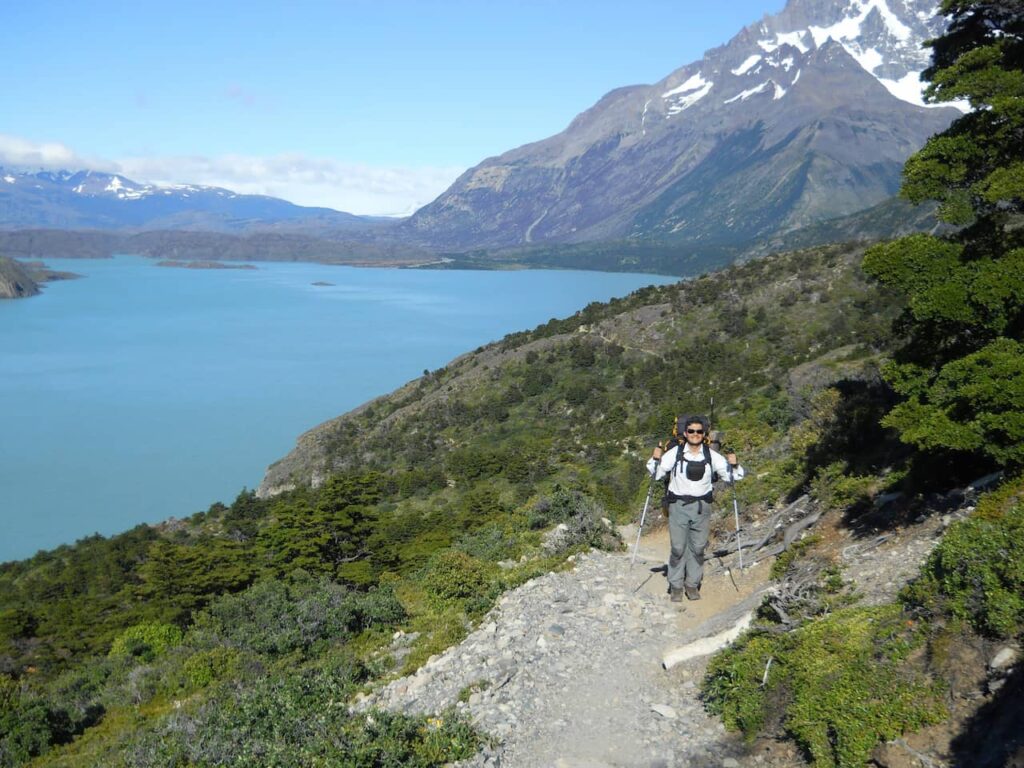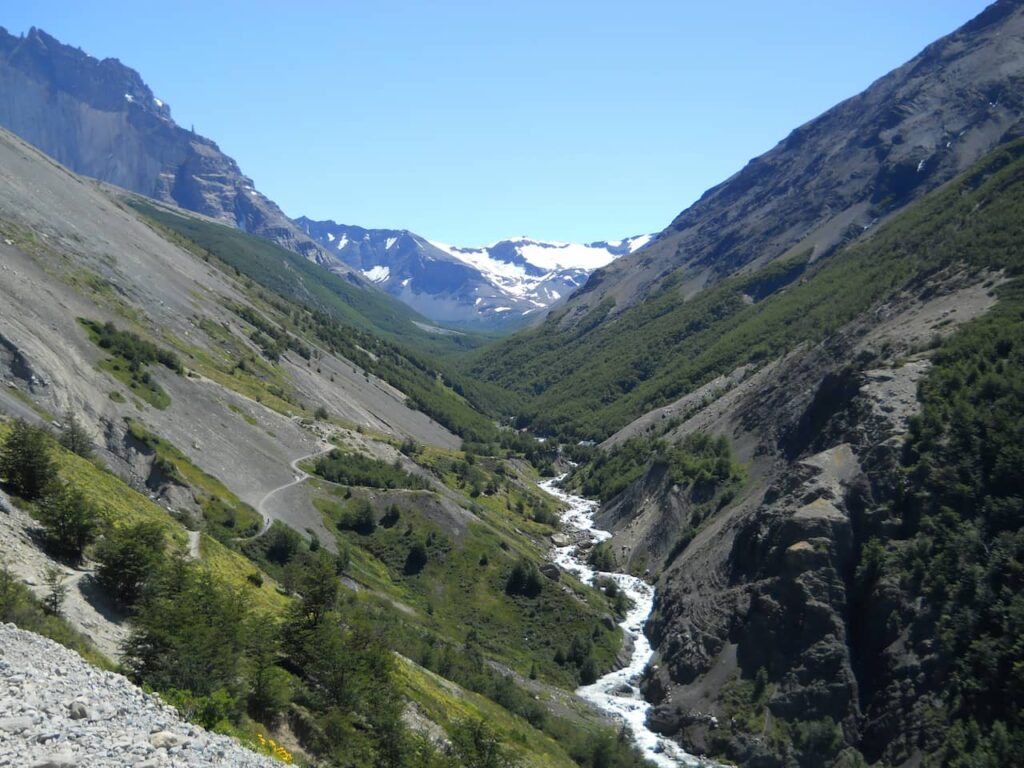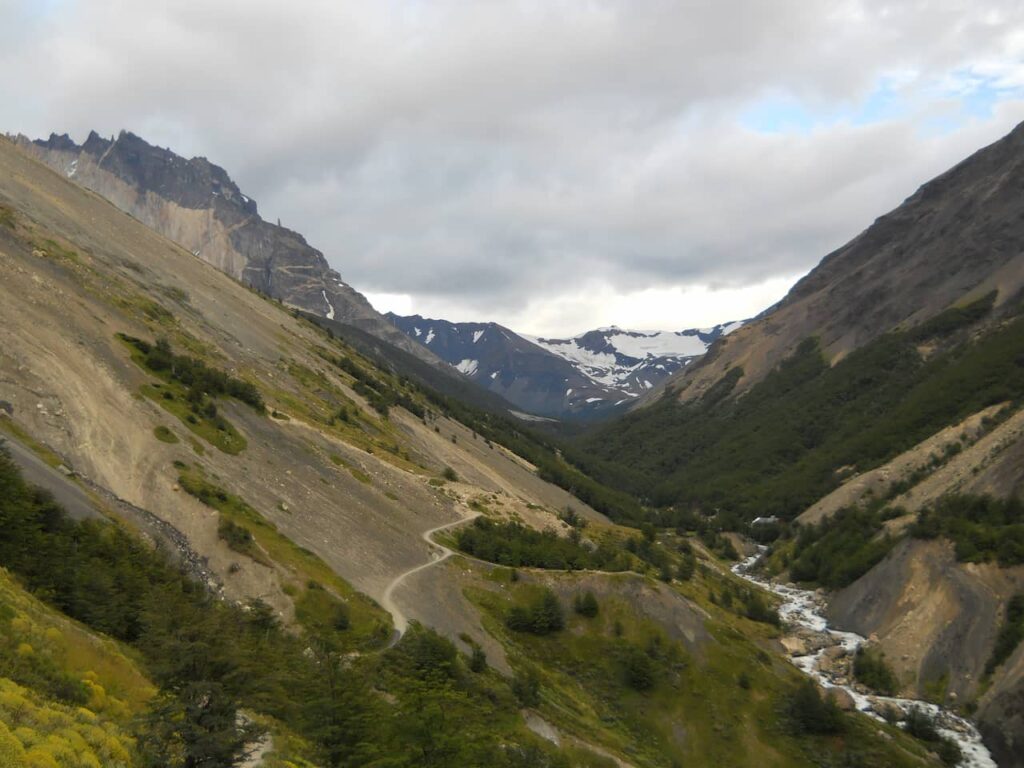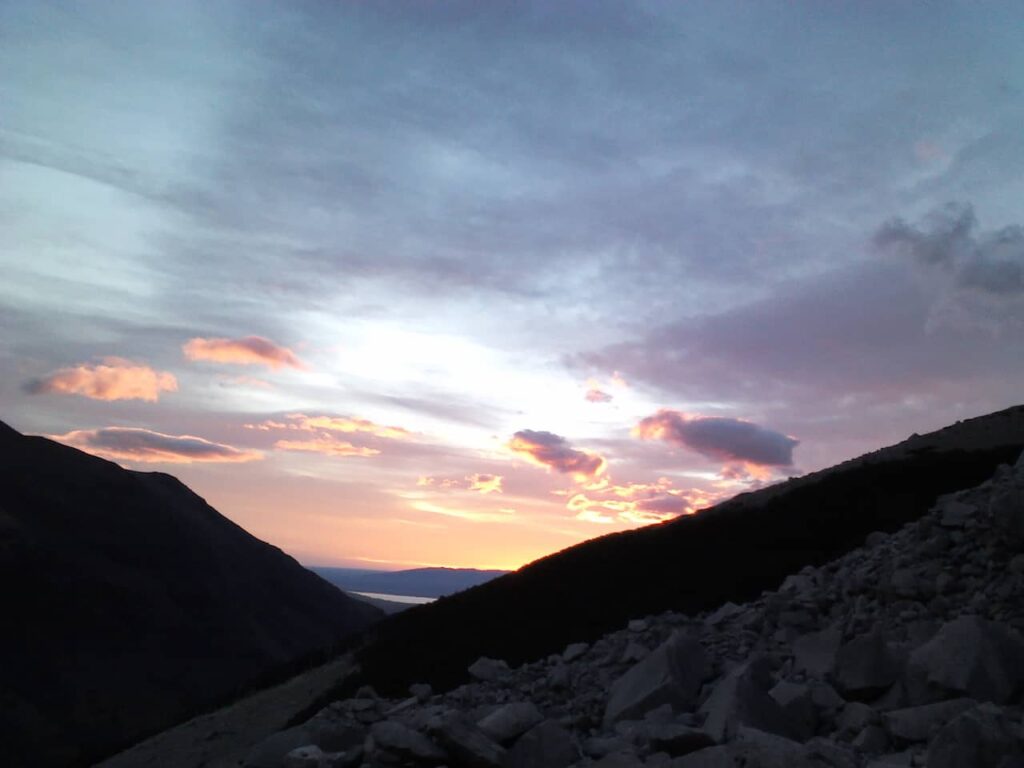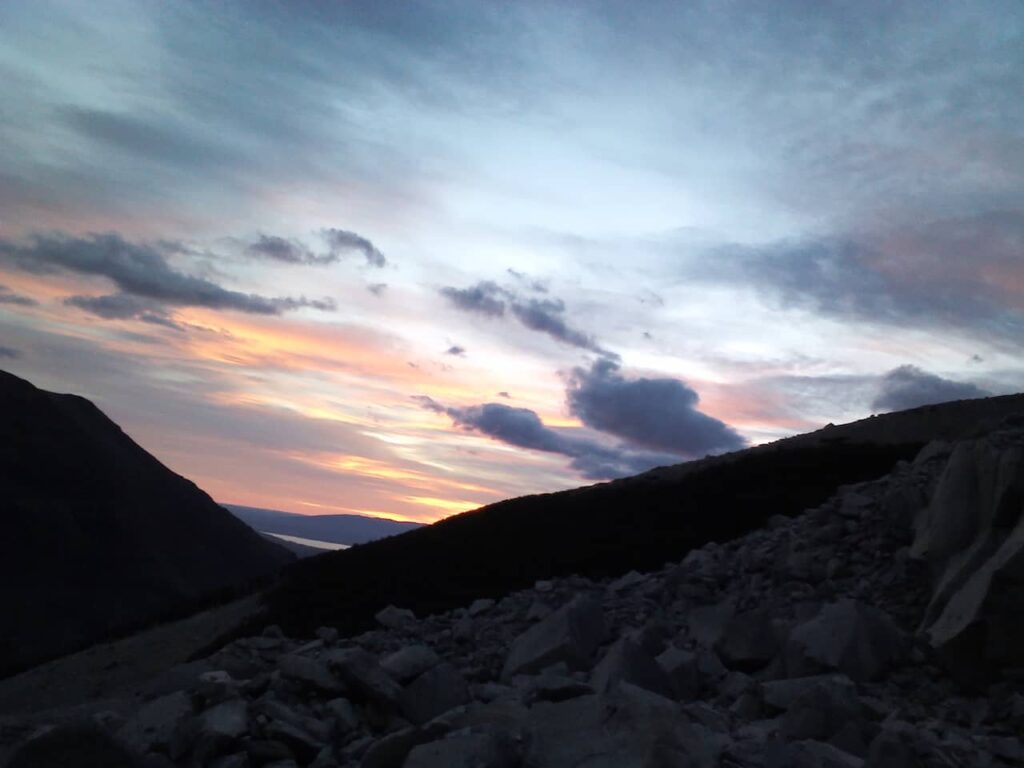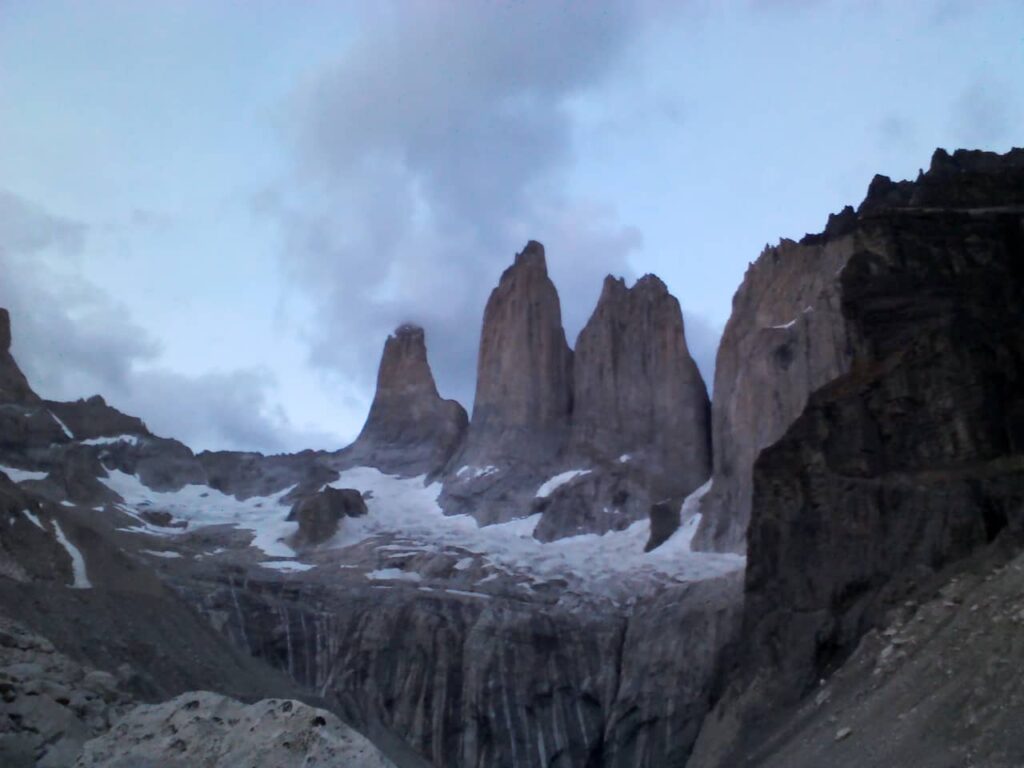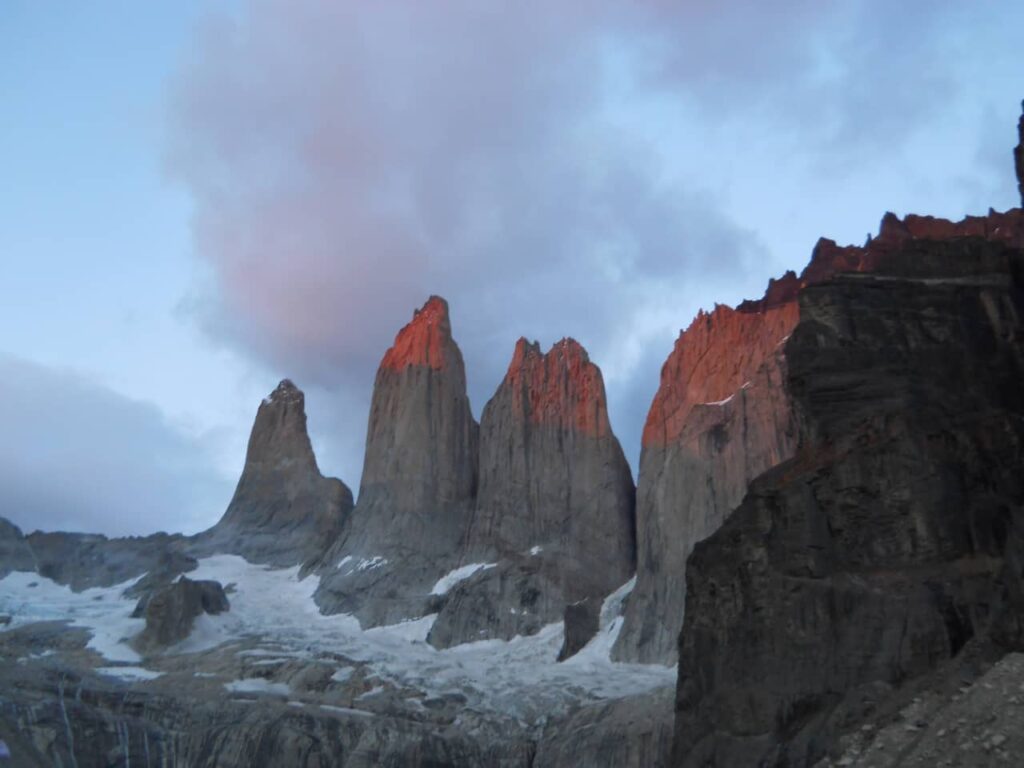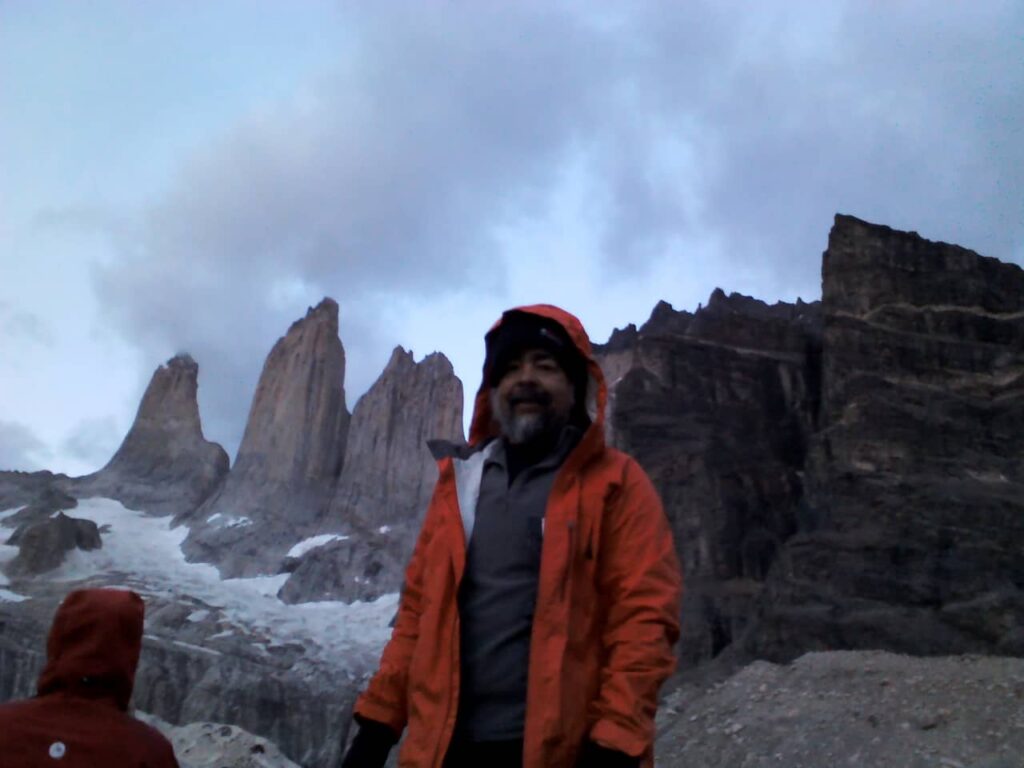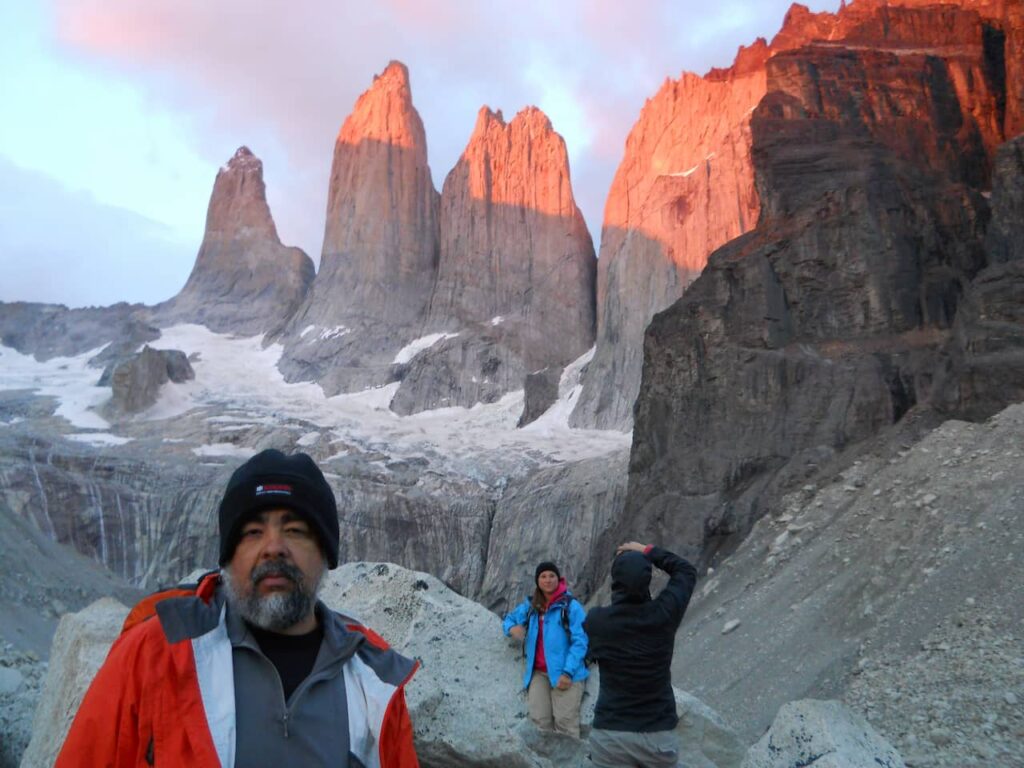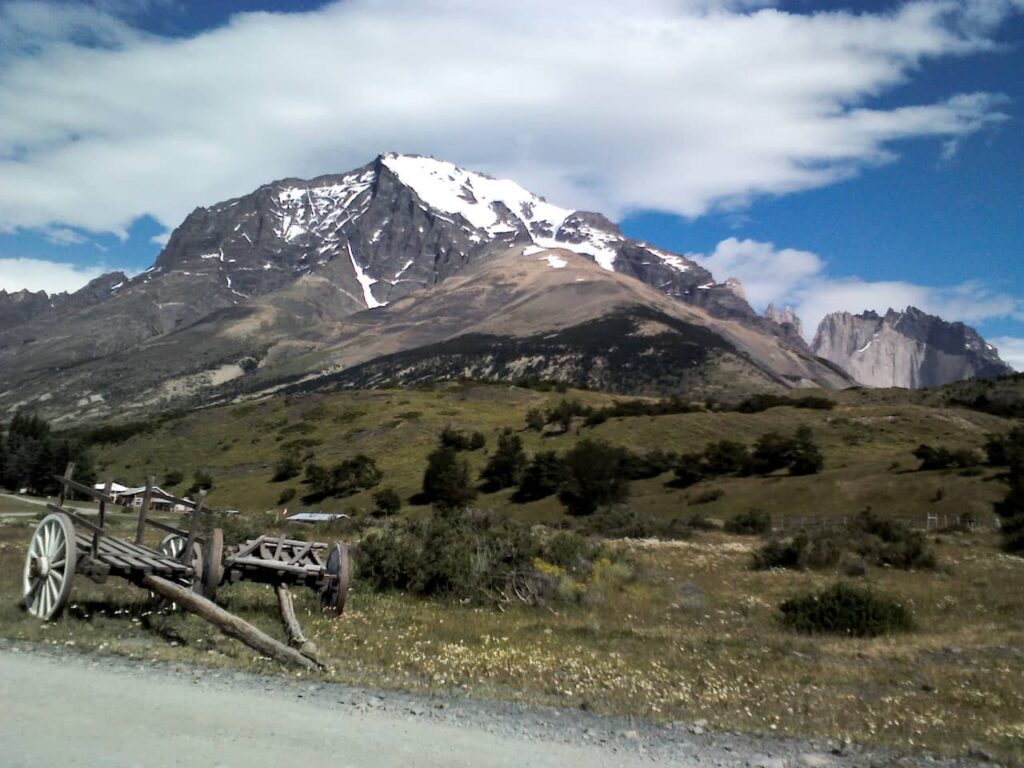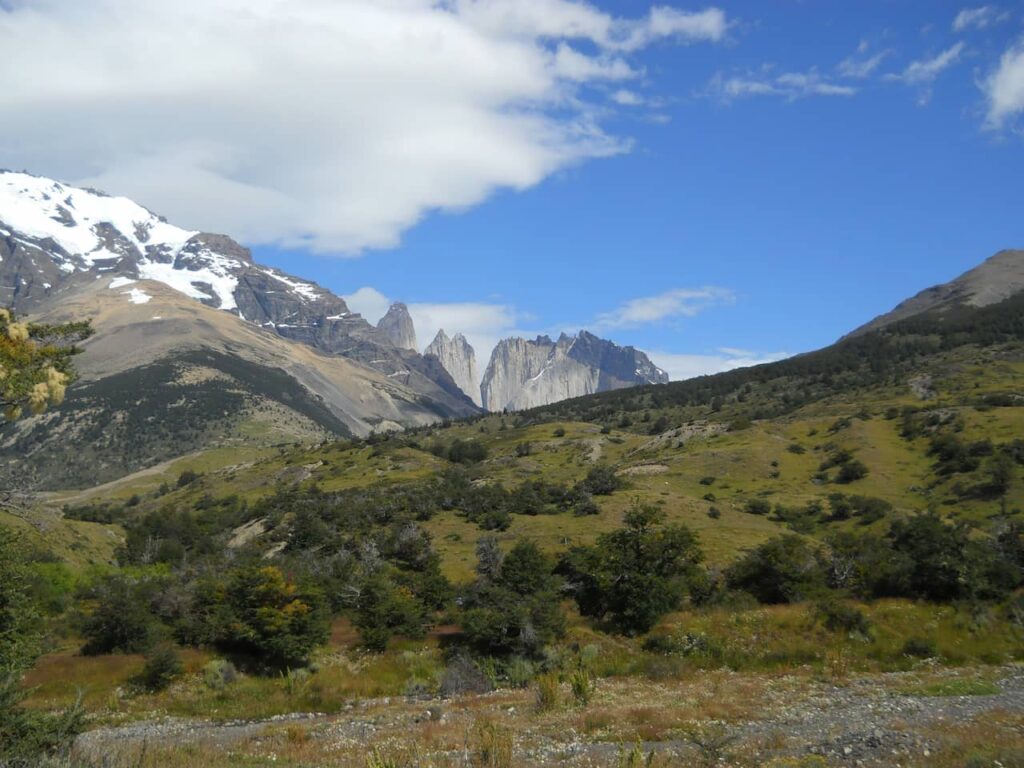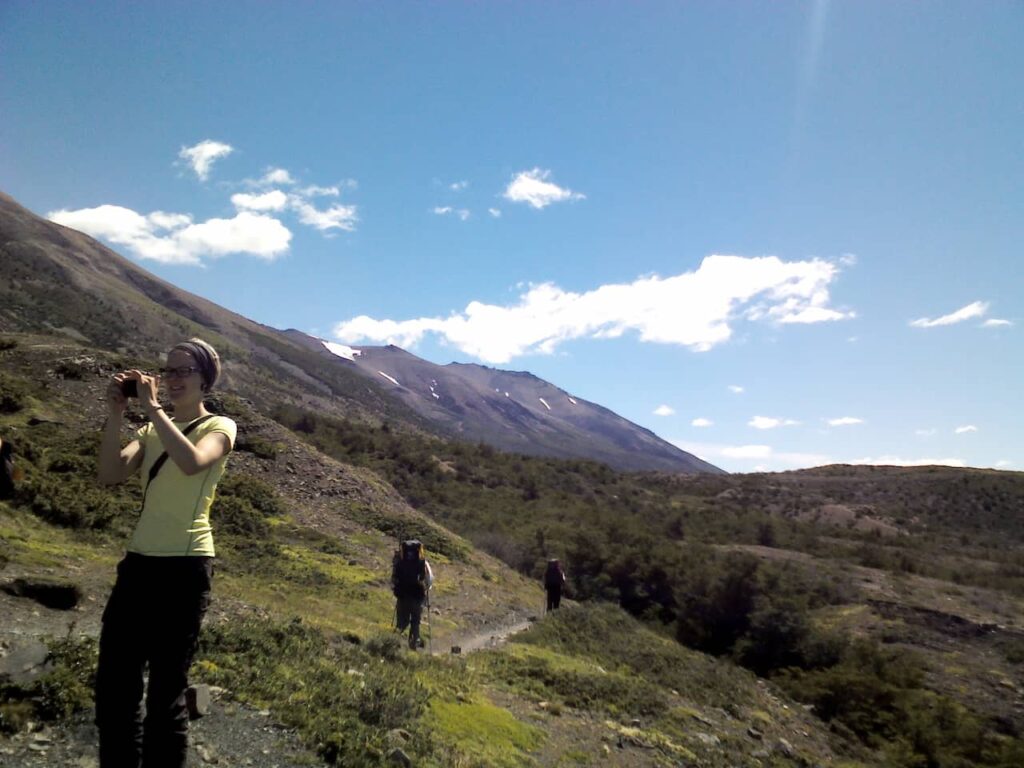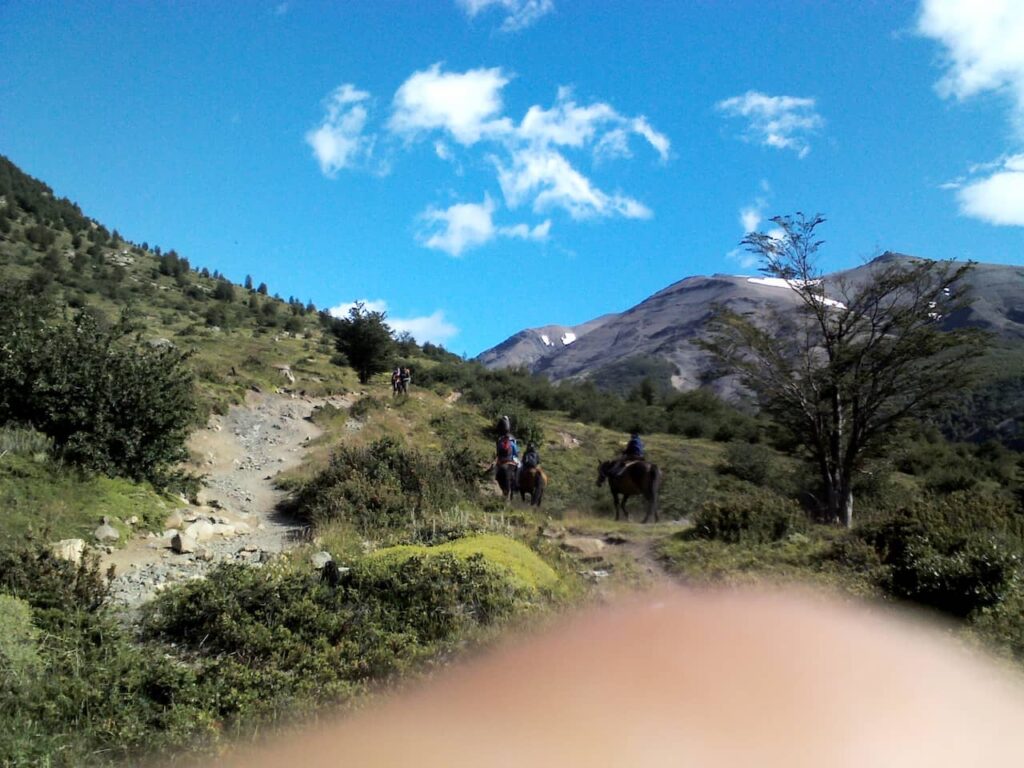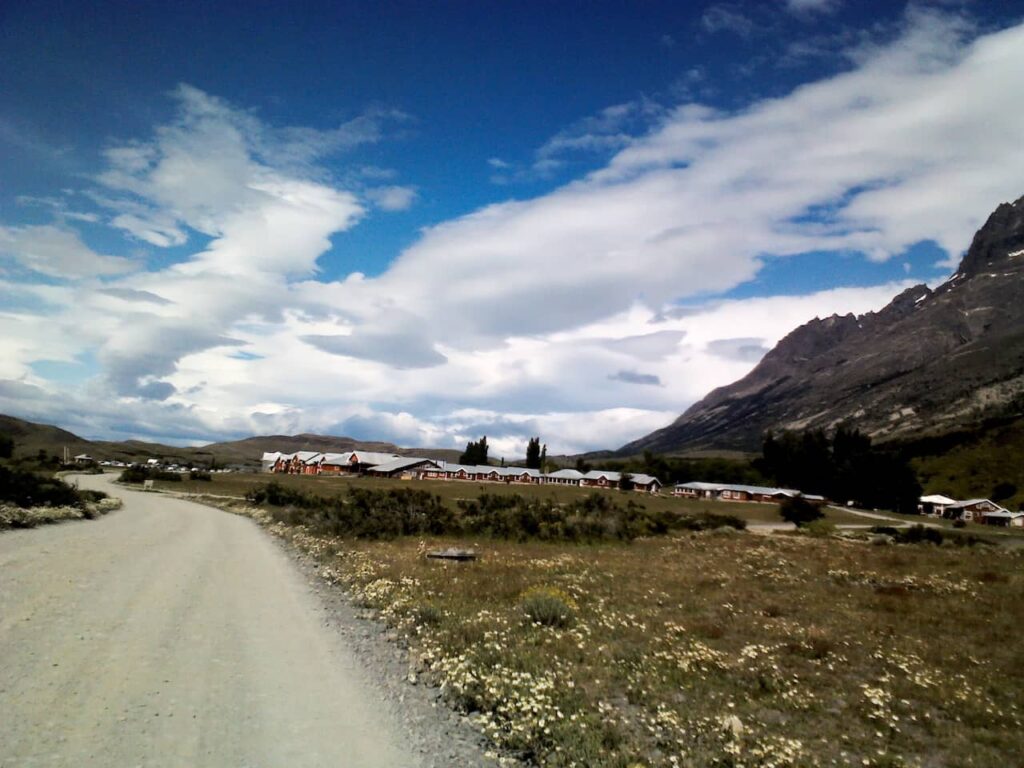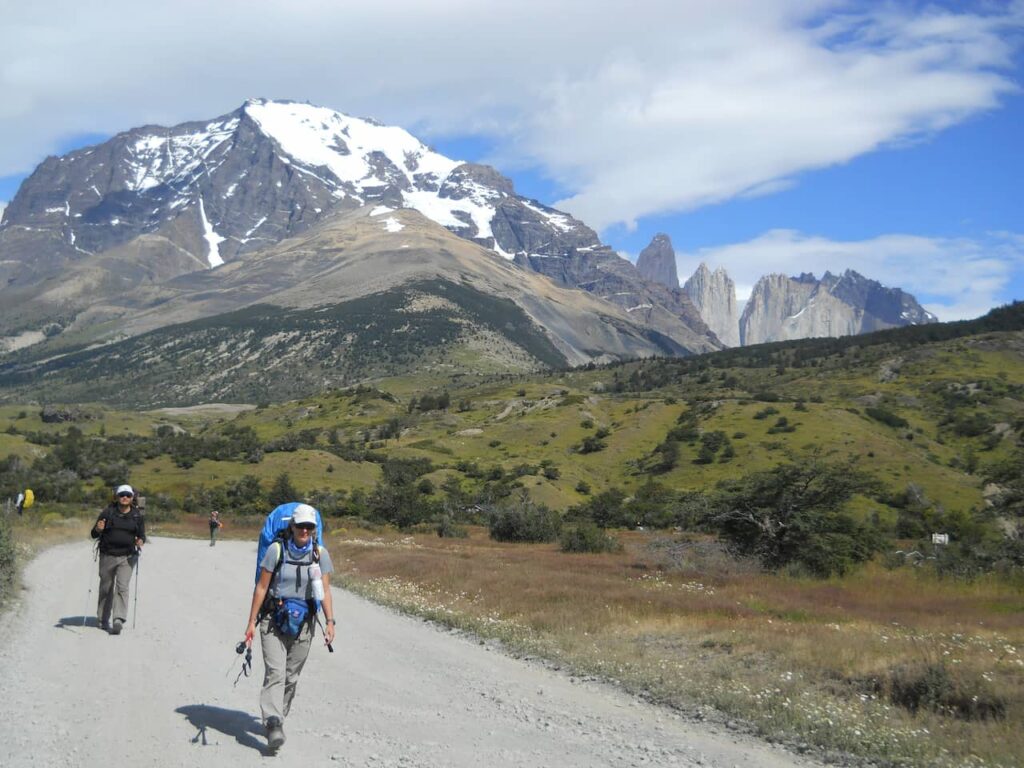Home » Trails and Crossing » Torres del Paine trekking
Trekking Torres del Paine
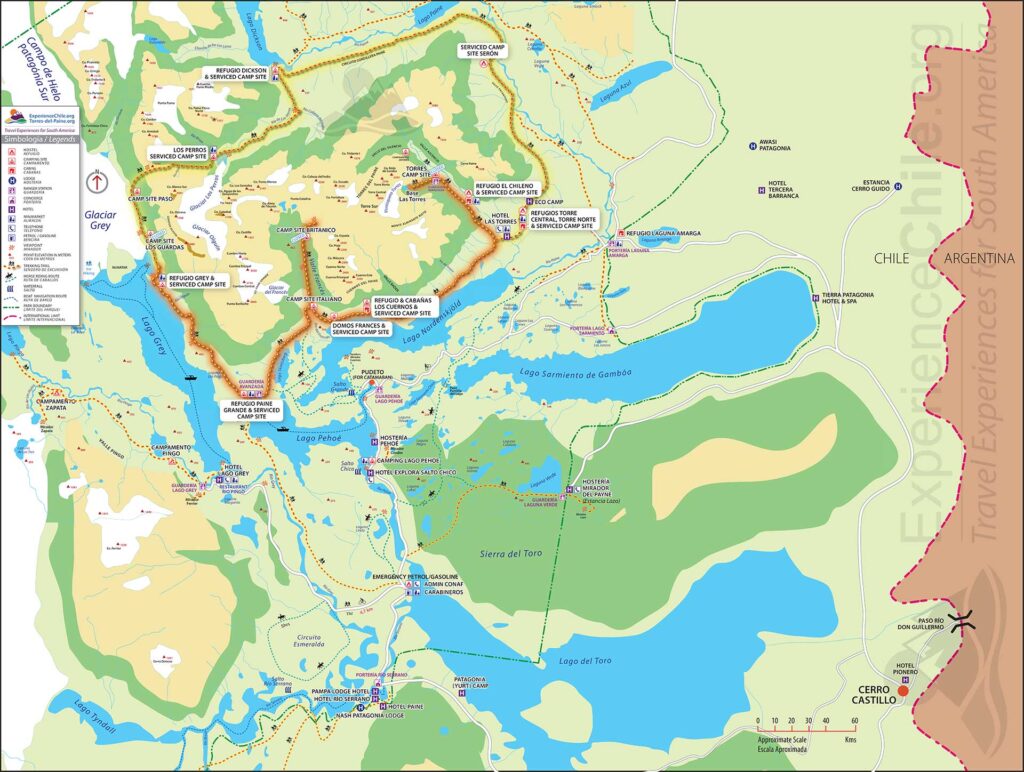
Trekking Torres del Paine.
We left El Calafate (Argentine Patagonia) by bus to Puerto Natales, a quiet trip that lasted 6 hours.
It costs from $15.00 to $20.00 depending on the bus type.
The companies that make this route are Bus Sur, Turismo Zaahj.
We arrived in Puerto Natales, where we met the other people’s group.
Now the team was complete. Me, Alessandro. Leniza, Yoshimi, Yuri and Gabriel.
We had decided that we would do the trail with tents and without a guide, so we were buying food and what was needed for the adventure.
It took us 2 days to complete preparations and went to the park.
We took a transport from Puerto Natales to Torres del Paine National Park.
Day 1: Laguna Amarga gate to Serón camp (9 km, 4 hours).
Arriving at Laguna Amarga park entrance, we made the entry documents and received a brief explanation of the trail and the weather forecast and then followed a trail that would, ahead, meet the trail of circuit O.
The path starts on a plain that was full of flowers and windy
After halfway, we enter the slope of the Paine hill.
At the end of the slope, we crossed a river and started a very tiring part, which was a marsh, until we reached Camp Serón.
Day 2: Camp Serón to Dickson Refuge (18.5 km, 6 hours).
The trail starts in a gentle field and turns to the left of Lake Paine.
And then it starts a gentle climb and stays on the low face of some hills and following the river of the same name, with a very beautiful view of the valley and mountains until reaching the Dickson refuge.
Day 3: Dickson Refuge to Los Perros Camp (8.7 km, 5 hours).
Leaving the Dickson camp there is a strong climb and we follow the Los Perros river valley and the mountainside.
Although it has a steady climb, it is not a very difficult trail.
Day 4: Los Perros to Refúgio Gray (22 km, 10 hours).
Depending on the weather conditions this part of the trail can be closed and then you have to go back the way you came, but we were lucky to have the passage open.
This is the most difficult and time-consuming part of the trail, both for elevation and distance.
The trail starts with a mixture of forest, mud, and a lot of climbing.
After a tiring first hour, we left the forest and started to climb, in the moraine, to the John Garner pass (1200 meters).
The view of Glacier Grey from the pass is wonderful.
After a short rest and enjoying the view, we start the descent through a forest.
This stretch was very demanding, as it had many landslides, where large ditches were created, which we descended and climbed by iron stairs.
As we were carrying a cargo bag, it was very dangerous and exhausting.
Here there is a Passo camp, which you can use if you have any difficulties, but after the rest, we head towards the Grey refuge.
After descending a lot and entering the forest, the trail is very quiet and easy until reaching parallel to the Grey glacier, continuing along the lake to the refuge.
Day 5: Refúgio Gray to Refúgio Paine Grande (11 km, 4 hours).
The difficult thing was behind us and as the trail would be quick and easy, we decided to rest and go out later.
We went down along Grey Lake, and from time to time a lookout to enjoy the view.
Day 6: Refugio Paine Grande to Refugio Los Cuernos (15 km, 8 hours).
Here we changed the itinerary a little, as we had the idea of leaving our backpacks at Camp Italianos and going to the French valley and camping at Refúgio Los Cuernos.
Thus facilitating the trip to the Chilean camp and Torres.
We pass by the area that had a fire the year before. We saw how the vegetation was all destroyed.
The path beside Lake Skottsberg is quite peaceful, with moments through beaches and mountainside trails towards the Italian camp.
When we arrived at the camp the weather was not very good and we decided to head to the Los Cuernos camp, on the edge of Lake Nordenskjöld.
Day 7: Refugio Los Cuernos to Refugio Chileno. (11 km, 6 hours).
The walk starts peacefully, along the lake,
With an hour to go before reaching Camp Torres, there is an exit on the left up the mountain to the path of Camp Chilenos.
It’s a steady climb of about two hours. We arrived at the camp at the end of the day, rested, and went to sleep, as the departure for the Towers would be around 3 am.
Day 8: Chilean Refuge to Base Torres and return to Refúgio (15 km, 8 to 9 hours).
We got up around 3 in the morning with a damn cold, had a coffee and went up to the towers.
The trail starts in a forest until the beginning of the moraina. It’s a demanding climb but nothing difficult, it just goes up all the time.
The goal was to get to the towers before sunrise, which we did.
When we arrived it was still dark, we waited a bit and soon we had a vision of the towers turning red in the sunlight.
We returned quietly to Chilenos and had a celebratory lunch at the end of the walk.
We rested and went to sleep the last night in the park.
Day 9: Chilean Refuge to Portaria Laguna Amarga and Puerto Natales.
We had breakfast and started the descent to the park gate.
We pass the hotel/refuge and camp Las Torres and take the road to the gate
After a short rest, we took the bus to Puerto Natales.
Thus came another great adventure to the end.
Circuit O is truly one of the best trails in the world.
Now it’s time to rest and prepare to go to Ushuaia.
